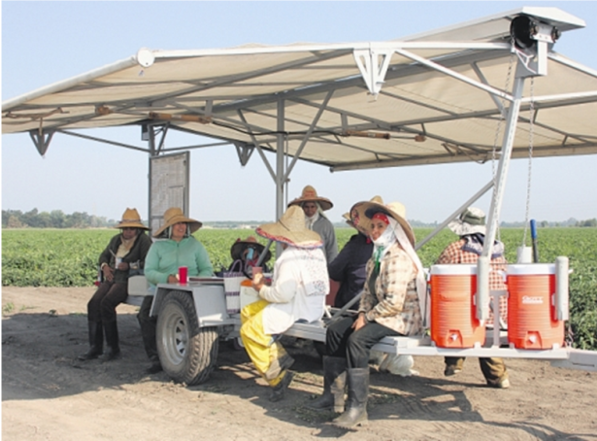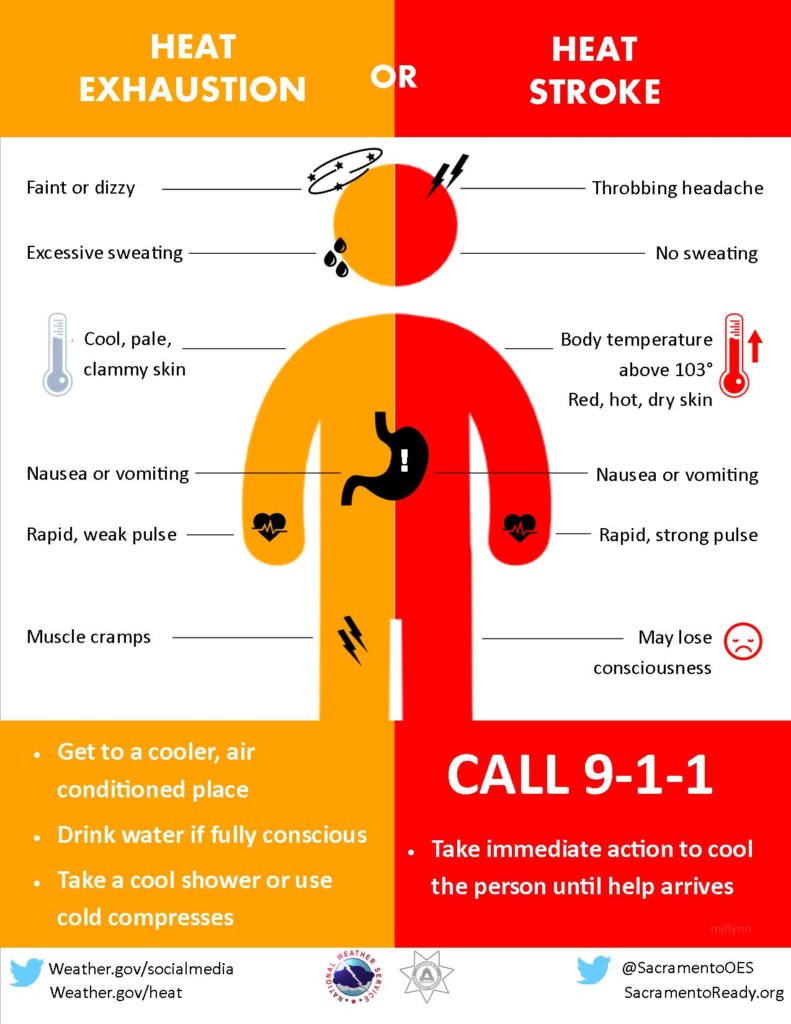
As we start our summer months and temperatures continue to rise, it is important to understand not only the precautions to take to keep employees safe while working in the heat, but also the elements of compliance.
According to the Division of Occupational Safety and Health (Cal/OSHA), their most frequently cited violations in agriculture under the Heat Illness Prevention Standard are failure to have a heat illness prevention plan in the field, a lack of heat illness prevention training and a failure to provide adequate shade and water. If that’s the case, it begs the question: What exactly does the standard require?
Heat Illness Prevention Plan
A company must have a written Heat Illness Prevention Plan with the following elements and include specific details as to how you will ensure that the provisions are met:
- The designated person(s) that have the authority and responsibility for implementing the plan in the field.
- Procedures for providing sufficient water.
- Procedures for providing access to shade.
- High-heat procedures.
- Emergency response procedures.
- Don’t forget your lone workers (e.g., irrigators).
- Acclimatization methods and procedures.
When drafting your plan, it is important to consider the size of your crew, the length of the work day, the ambient temperatures and any additional personal protective equipment (PPE) that contributes as an additional source of heat. The plan needs to be in English and also the language understood by the majority of the employees. The plan must be located at the worksite and accessible to employees.
Heat Illness Prevention Training
Employee training needs to be done before an employee begins a shift which could result in the risk of heat illness. Training should cover the following information:
The environmental and personal risk factors for heat illness as well as the added burden of heat load on the body caused by exertion, clothing and PPE.
The employer’s procedures for complying with the plan’s elements, including the employer’s responsibility to provide water, shade, cool-down rests and access to first aid as well as
The employees’ right to exercise their rights.
The importance of frequent consumption of small quantities of water throughout the workday.
The concept, importance and methods of acclimatization.
The different types of heat illness, the common signs and symptoms, and appropriate first aid and emergency responses to the different types of heat illness. In addition, that heat illness may progress quickly from mild symptoms to serious and life-threatening illness.
The importance to employees of immediately reporting to the employer, directly or through the employee’s supervisor, signs or symptoms of heat illness experienced by themselves or their co-workers.
The employer’s procedures for responding to signs or symptoms of possible heat illness, including how emergency medical services will be provided should they become necessary.
The employer’s procedures for contacting emergency medical services and, when necessary, transporting employees to a point where they can be reached by an emergency medical service provider.
The employer’s procedures for ensuring that, in the event of an emergency, clear and precise directions to the work site can and will be provided as needed to emergency responders.
These procedures shall include designating a person to be available to ensure that emergency procedures are initiated when appropriate.
- Supervisor training needs to be completed prior to supervising employees and include the following topics:
- All of the topics covered during employee training.
- The procedures the supervisor is to follow to implement the heat illness prevention plan procedures.
- The protocol a supervisor is to follow when an employee exhibits signs or reports symptoms consistent with possible heat illness, including emergency response procedures.
- How to monitor weather reports and how to respond to hot weather advisories.

Adequate Shade and Water
Shade
Adequate shade means blockage of direct sunlight. One indicator that blockage is sufficient is when objects do not cast a shadow in the area of blocked sunlight. Shade is not adequate when heat in the area of shade defeats the purpose of shade, which is to allow the body to cool. For example, a car sitting in the sun does not provide acceptable shade to a person inside it, unless the car is running with air conditioning. Shade may be provided by any natural or artificial means that does not expose employees to unsafe or unhealthy conditions and that does not deter or discourage access or use.
Shade needs to be available when the temperature exceeds 80 degrees F. How do you know when temperatures hit 80 degrees F? Cal/OSHA urges employers to not rely on your cell phone because it does not reflect the site-specific temperatures. The best practice is to invest in and use an outdoor thermometer daily.
The amount of shade present shall be at least enough to accommodate the number of employees on recovery or rest periods,so that they can sit in a normal posture fully in the shade without having to be in physical contact with each other. The shade shall be located as close as practicable to the areas where employees are working. Shade also needs to be available, even when the temperature does not exceed 80 degrees F, upon employee request.
Water
Employees shall have access to potable drinking water. It must be fresh, pure, suitably cool and provided to employees free of charge. The water shall be located as close as practicable to the areas where employees are working. Where drinking water is not plumbed or otherwise continuously supplied, it shall be provided in a sufficient quantity at the beginning of the work shift to provide one quart per employee per hour for drinking for the entire shift. Employers may begin the shift with smaller quantities of water if they have effective procedures for replenishment during the shift as needed to allow employees to drink one quart or more per hour.
Indoor Heat Illness Prevention Standard Coming Our Way
In 2016, the legislature passed and Governor Brown signed into Senate Bill 1167, which directed Cal/OSHA to propose a heat illness and injury prevention standard applicable to employees working in indoor places of employment. The agency developed a proposed standard, and the language of the proposed standard has been open to several public comment periods. On April 22, 2019, the most current revised draft standard was posted. Cal/OSHA is preparing rulemaking documents based on that draft. No further changes prior to rulemaking are expected.
In summary, the most current version of the draft language addresses the issue of mitigating heat illness in indoor places of employment, including agriculture, as follows:
Applies to all indoor work areas regardless of industry when workers wear clothing that restricts heat removal and the temperatures equal or exceed 82 degrees F.
Applies to all other indoor work areas not previously mentioned where temperatures equal or exceed 87 degrees F when employees are present.
Similar to the outdoor heat illness prevention standard, including provision of water, cool down areas.
Provide appropriate first aid/emergency response if employee exhibits signs or symptoms of heat illness.
Implement temperature assessment, documentation and control measures when temperatures equal or exceed 87 degrees F.
Have a written Indoor Heat Illness Prevention Plan that includes appropriate emergency response procedures.
Ensure close observation of employees during acclimatization.
Provide training for employees and supervisors prior to possible exposure.
To read the complete draft text and stay up-to-date on the process as it continues to unfold, visit dir.ca.gov/dosh/doshreg/Heat-illness-prevention-indoors/.
For more information about heat illness prevention, worker safety, human resources, labor relations, pesticide safety or food safety issues, please visit www.agsafe.org, contact us at (209) 526-4400 or via email at safeinfo@agsafe.org. AgSafe is a 501c3 nonprofit providing training, education, outreach and tools in the areas of worker safety, human resources, labor relations, pesticide safety and food safety issues for the food and farming industries. Since 1991, AgSafe has educated nearly 75,000 employers, supervisors and workers on these critical issues.










